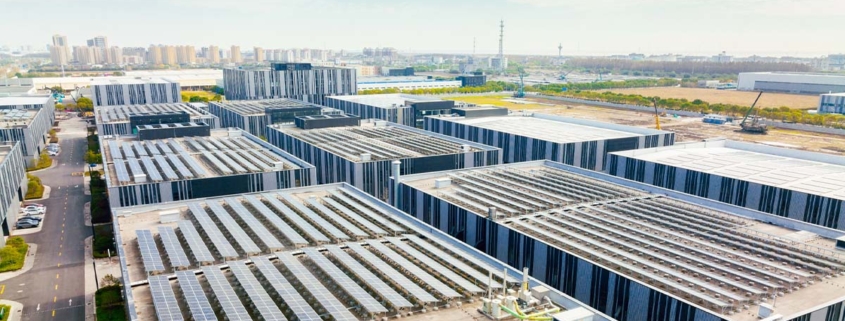Shifting Towards Sustainability: Why Green Construction Offers Multiple Benefits
Companies in various industries are placing greater emphasis on conducting their operations in a way that is sustainable and eco-friendly. The construction sector is a significant contributor to the global demand for natural resources, accounting for roughly half of all raw materials used around the world. By implementing sustainable building practices, construction companies can see many advantages. Green construction not only enhances efficiency and decreases waste but can help a project’s financial position.
What is Sustainable Construction?
The U.S. Environmental Protection Agency (EPA) defines sustainable construction as “the practice of creating structures and using processes that are environmentally responsible and resource-efficient throughout a building’s lifecycle from siting to design, construction, operation, maintenance, renovation, and deconstruction.”
Sustainable construction expands and complements the classical building designs of economy, utility, durability, and comfort, states the EPA. Green buildings are designed to reduce the overall impact of the built environment on human health and the natural environment by using energy, water, and other natural resources more efficiently; protecting occupant health; improving employee productivity; and reducing waste, pollution, and environmental degradation.
The potential benefits of adopting green construction practices for contractors and communities include:
● Less waste
● Lower energy and material costs
● Higher profits
● Healthier living
● Lower carbon emissions
● More community goodwill
How to Practice Sustainable Construction
Contractors can practice sustainable construction in several ways. One of the best is to use eco-friendly, biodegradable, and recycled building materials and techniques. These may include:
Green insulation: Insulation can be made from a variety of recycled materials including newspaper, glass, and even denim. That’s right: Your old blue jeans could be turned into wall insulation! Cellulous insulation may consist of up to 85 percent recycled material while fiberglass insulation may consist of up to 40 percent recycled material.
“Cool” roofing: These roofs are specially designed to provide increased solar reflectance and decreased thermal emittance by reflecting more of the sun’s rays and keeping warm or cool air inside from escaping. This reduces the strain on HVAC units, along with utility costs and carbon emissions. Cool roofs can be constructed using special heat-reflective shingles, tiles, and paint.
Geothermal heating and cooling: This taps into the earth’s natural energy to generate power for heating and cooling. Pipes are buried a few feet underground and a mixture of water and antifreeze is pumped through them to collect geothermal energy, which is routed to a heat pump and used to heat and cool the building. Buried pipes don’t freeze, remaining around 60 degrees even during freezing temperatures.
High-tech windows: Up to 70 percent of a building’s energy loss occurs through doors and windows, and 90 percent of window heat loss is through the glass. Low-E (or low-emissivity) windows use a microscopically thin clear coating of metallic oxide to minimize the amount of infrared and ultraviolet light coming into a building while reflecting interior temperatures back inside. This helps keep the heat outside in the summer and inside in the winter.
Electrochromic glass windows, or smart windows, are even more high tech. They use a burst of electricity to charge ions on a window layer and change how much light is reflected. Smart windows can be tied into smart building control systems to tint all of the building’s windows automatically during peak sun hours and return to transparency when the sun recedes.
Solar panels: Rooftop solar panels are becoming a more common sight as a growing number of buildings are using them to generate power in an eco-friendly way. Photons from sunlight are absorbed by cells in the panels, creating an electric field across the layers. The cost of solar power has fallen every year since 2009 and is now competitive with traditional electricity in some areas of the country.
In addition to using solar panels, buildings can be designed so that they are heated passively through strategic placement of windows and other design elements. For example, dark walls can absorb heat to warm the building while fans and air vents can spread warm or cool air around.
Low-flow plumbing fixtures: These use significantly less water than traditional toilets, faucets, and shower heads, which decreases water waste and lowers energy usage and cost. Low-flow toilets use about 1.5 gallons of water per flush compared to up to 6 gallons per flush for a traditional toilet, while low-flow shower heads use less than 2.5 gallons of water per minute. Low-flow faucets can reduce a sink’s water flow by up to 30 percent.
Put it into Practice
Implementing green construction can reduce expenses, promote energy conservation, and preserve the natural environment. As you consider your next project, also consider how you, your community and our natural world can benefit from eco-friendly practices.
Dembo Jones can help identify sustainable construction practices and explain how they might impact a project. Contact us to discuss how you can benefit.
